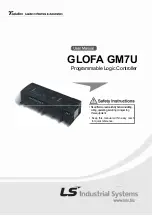
211
7679H–CAN–08/08
AT90CAN32/64/128
18.5.3
Bus Interface Unit
This unit contains the Data and Address Shift Register (TWDR), a START/STOP Controller and
Arbitration detection hardware. The TWDR contains the address or data bytes to be transmitted,
or the address or data bytes received. In addition to the 8-bit TWDR, the Bus Interface Unit also
contains a register containing the (N)ACK bit to be transmitted or received. This (N)ACK Regis-
ter is not directly accessible by the application software. However, when receiving, it can be set
or cleared by manipulating the TWI Control Register (TWCR). When in Transmitter mode, the
value of the received (N)ACK bit can be determined by the value in the TWSR.
The START/STOP Controller is responsible for generation and detection of START, REPEATED
START, and STOP conditions. The START/STOP controller is able to detect START and STOP
conditions even when the AVR MCU is in one of the sleep modes, enabling the MCU to wake up
if addressed by a master.
If the TWI has initiated a transmission as master, the Arbitration Detection hardware continu-
ously monitors the transmission trying to determine if arbitration is in process. If the TWI has lost
an arbitration, the Control Unit is informed. Correct action can then be taken and appropriate
status codes generated.
18.5.4
Address Match Unit
The Address Match unit checks if received address bytes match the 7-bit address in the TWI
Address Register (TWAR). If the TWI General Call Recognition Enable (TWGCE) bit in the
TWAR is written to one, all incoming address bits will also be compared against the General Call
address. Upon an address match, the Control Unit is informed, allowing correct action to be
taken. The TWI may or may not acknowledge its address, depending on settings in the TWCR.
The Address Match unit is able to compare addresses even when the AVR MCU is in sleep
mode, enabling the MCU to wake up if addressed by a master. If another interrupt (e.g., INT0)
occurs during TWI Power-down address match and wakes up the CPU, the TWI aborts opera-
tion and return to it’s idle state. If this cause any problems, ensure that TWI Address Match is the
only enabled interrupt when entering Power-down.
18.5.5
Control Unit
The Control unit monitors the TWI bus and generates responses corresponding to settings in the
TWI Control Register (TWCR). When an event requiring the attention of the application occurs
on the TWI bus, the TWI Interrupt Flag (TWINT) is asserted. In the next clock cycle, the TWI Sta-
tus Register (TWSR) is updated with a status code identifying the event. The TWSR only
contains relevant status information when the TWI Interrupt Flag is asserted. At all other times,
the TWSR contains a special status code indicating that no relevant status information is avail-
able. As long as the TWINT flag is set, the SCL line is held low. This allows the application
software to complete its tasks before allowing the TWI transmission to continue.
The TWINT flag is set in the following situations:
• After the TWI has transmitted a START/REPEATED START condition
• After the TWI has transmitted SLA+R/W
• After the TWI has transmitted an address byte
• After the TWI has lost arbitration
• After the TWI has been addressed by own slave address or general call
• After the TWI has received a data byte
• After a STOP or REPEATED START has been received while still addressed as a slave
Содержание AVR AT90CAN128
Страница 414: ...414 7679H CAN 08 08 AT90CAN32 64 128 32 2 QFN64...
Страница 415: ...415 7679H CAN 08 08 AT90CAN32 64 128...
















































